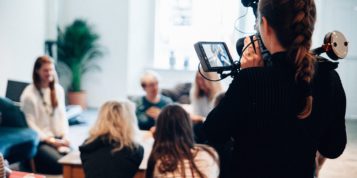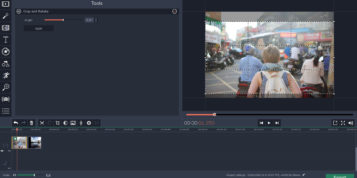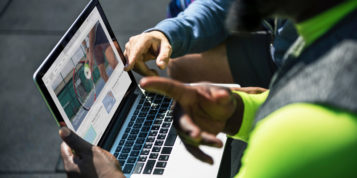With millions of subscribers and hugely passionate audiences, the competition among vloggers and videographers airing their content online is fiercer than ever. The exponential growth of platforms and networks like YouTube means these creative outlets are now serious rivals to global mainstream TV broadcasters in the battle to attract the most viewers. While this initially points to the democratisation of content creation, spurred by the availability of high quality, cost-effective equipment, it’s no longer seen as a hobby.
The main viewing demographic may be the digitally-driven millennials but with some of the top YouTube stars attracting more than 40 million viewers, it is no surprise that a growing number of amateur and professional filmmakers are looking to take a piece of the online action.
The biggest challenge for these creatives is differentiating their online coverage from their competitors and many are investing in the latest cameras and editing kit to improve the quality of their offering. The vlogging format may have started out with people talking into a webcam, but the industry is evolving and image quality has become just as valued as the content itself.
So what are today’s vloggers looking for when it comes to selecting a camera that will ultimately influence the quality of their content?
Size does matter
Just like any other technology, cameras should be fit for purpose. This is especially important for vloggers on the move. Having something that is small enough to fit into your hand, on a selfie stick, or in your pocket can improve your portability, flexibility and overall ability to capture anything, anywhere. Of course, not all small cameras have the same functionality or offer the same performance — as a result, it’s important to get to know the settings, functions, and features that you need in your filmmaking.
This can easily be done by exploring the different settings and experimenting with features — like seeing exactly how electronic image stabilisation (EIS) adds to filming, especially for outdoor shoots or navigating uneven terrain.
Accessorise, accessorise, accessorise
This is not just a fashion philosophy — making use of the latest accessories and add-ons to your equipment can add new functionality and dimensions to your filming, particularly if you’re outdoors, on location or want to showcase something in the background. Additions like selfies sticks and handlebar or head mounts can take vlogging to the next level to help you take even more amazing content.
And that’s not to forget the humble battery. Have you ever tried capturing that once in a lifetime experience on camera, only to find that you don’t have a back-up battery to hand when your current one will inevitably die? Battery life is crucial to ensure you capture the best footage, but there are dangers to recording for long periods of time.
Keep in mind that your camera can overheat, which can damage the camera or stop you getting your footage. Look out for cameras with their own heat management system to help avoid overheating when capturing high-resolution footage.
Make yourself heard
Audio is a critical part of vlogging and there’s nothing more cumbersome than remembering to bring along a separate microphone — especially when you’re out and about. Instead, look for a camera with a decent built-in microphone that can capture crystal clear audio even in a noisy environment, like omni-directional microphones with high sensitivity and high signal to noise (SNR) functionality.
Lights, camera…
Lighting is key to any filming as it sets the mood and creates the right atmosphere for the content. For vlogging the same is true. While traditional settings — in an office or living room — have the capacity to provide lighting or for it to be manipulated according to needs, it’s not so easy for on the go shoots or shooting in different locations. Instead, choosing a camera with features that account for different lighting conditions and adjust accordingly, or make it easy to adjust manually. This includes adjusting to low light settings automatically, ISO settings, and additional features like exposure value compensation (EV) that influences the brightness of the video.
On the big screen
Once your content is captured, it’s important that you can quickly and easily go back and take a look at what you’ve done before or even during editing. You need a camera that gives you the option to preview content and play videos back on the device itself, as well as on a laptop or TV. Adding previewing functionality into the mix with an app can also make your shooting, reviewing and editing process that much more efficient and streamlined.
Regardless of what you’re doing as a vlogger, whether you’re an enthusiast or a professional, having the right equipment is absolutely critical. With advances in technology, cameras on the market today can deliver the functionality, performance and high quality shots needed to meet the requirements of a wide range of users.





